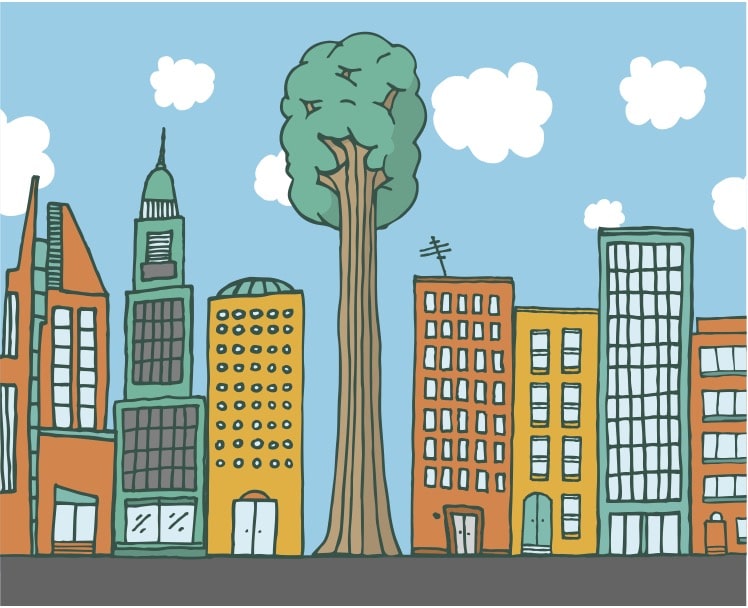Green buildings are nothing new. In fact, the energy efficiency of a wide range of building systems and operational practices have been hallmarks of the smart building movement that has been evolving over the last few decades. However, the sustainability of buildings is about more than just operational efficiency, they must also incorporate environmentally responsible approaches during the full lifecycle of buildings to truly be considered green. A key element of this is sustainability within the construction process, where traditional supply chains are now being disrupted by a drive towards a full-lifecycle approach towards green buildings.
“The Construction Industry is considered one of the biggest waste generators in the world, and to tackle this problem, the concept of environmental sustainability in the construction sector can act in different areas, as waste reduction, carbon emissions reduction, better selection of materials and others,” explains Benachio et al. in their paper Green Supply Chain Management in the Construction Industry. “These areas involve several stakeholders during a life cycle of a project, therefore the implementation of a Green Supply Chain Management (GSCM) can help the sustainability aspect of constructions.”
GSCM refers to the concept of integrating sustainable environmental processes into the traditional supply chain. For construction, this can include processes such as building product design, material sourcing and selection, manufacturing and production, cleaner construction systems, as well as early consideration of end-of-life management for buildings. Instead of simply attempting to mitigate the environmental impact of the supply chain, GSCM involves driving value creation throughout supply chain organizations involved in the construction process to reduce total environmental impact. The focus on green value creation has been key to the concept’s increasing popularity.
51% of supply chain professionals expect their focus on "circular economy strategies" to increase over the next two years, according to a 2020 Gartner survey. Growth in supply chain sustainability strategies are propelled by two main factors according to the survey; the capital expenditure reducing product-as-a-service model gaining traction, and the potential for circular economic strategies to enhance the security of raw materials by utilizing end-of-life products. More recently, a third driver has emerged from the challenges of maintaining business-as-usual during the global pandemic.
“The COVID-19 pandemic has shown that the strengths of globalized supply chains can become a weakness when raw material availability and access plummet during a crisis. For CSCOs, the circular economy is a great opportunity to improve raw material resilience and decouple material consumption from financial growth,” said Sarah Watt, senior director analyst with the Gartner Supply Chain Practice. “The one thing supply chains can do which has the potential to enable and accelerate circular economy outcomes, is to get involved in the design process. Supply chain professionals must engage with product design to highlight constraints and opportunities for end-of-life materials management.”

While it all starts with design, the design process itself is driven by demand from the buyers and if that demand is for greener products and materials then more of those products will become available. As buildings strive to comply with growing environmental regulations and meet rising tenant demand for green building credentials, the range of practical, affordable, and sustainable products for buildings and construction grows. Only with environmentally friendly products, sustainable construction, efficient operation, and carbon offsetting can buildings hope to stand out in the rapidly developing green buildings market, so each element is becoming vital to that ultimate goal.
“To shrink our products’ carbon footprint, we introduced more recycled and bio-based material, redesigned them to use less material, increased our energy efficiency, and tapped on more renewable energy,” said Maxine Chen, sustainability communications specialist for Interface, a flooring company with a growing focus on green products. “After we reduced our products’ emissions to the lowest levels in our industry, it became economically viable for us to achieve carbon neutrality by purchasing a small amount of carbon offsets.”
Regulation and demand are two major driving forces behind the emergence of full-lifecycle green buildings that are disrupting the construction supply chain. A third key influence is financing, where the introduction of sustainability-related performance targets is becoming a game-changer for the adoption of greener supply chain practices. Progressive banks are now making investments with environmental and climate benefits key to their mandates, thereby incentivizing the decision for property developers to go green beyond the requirements of regulation. The so-called “green recovery” from COVID-19 is now accelerating this trend.
“We expect green loans and bonds to be increasingly used as financing mechanisms, as firms look to four ‘R’s – restart, rebuild, renew and recover – in response to Covid-19 crisis,” said Corrado Forcellati, director of sustainability services at accounting firm KPMG, in Singapore. “The increase in platforms and marketplaces to facilitate sustainable practices is also a clear indication that supply chains will become more transparent and business models will become more environmentally-friendly.”
In a recent Memoori poll, 64% of respondents expect “more drive for green buildings” as attitudes towards inefficient buildings and climate change shift after the pandemic. Financing, regulation, and growing tenant demand for greener buildings are the key drivers of this movement but, importantly, it is a holistic view of the building from design and construction to operation and demolition that is bringing about real change. Representing around 40% of total carbon emissions, buildings can no longer ignore their collective impact on the environment so the full-lifecycle approach to sustainability of building has become crucial to collective our fight against climate change.



